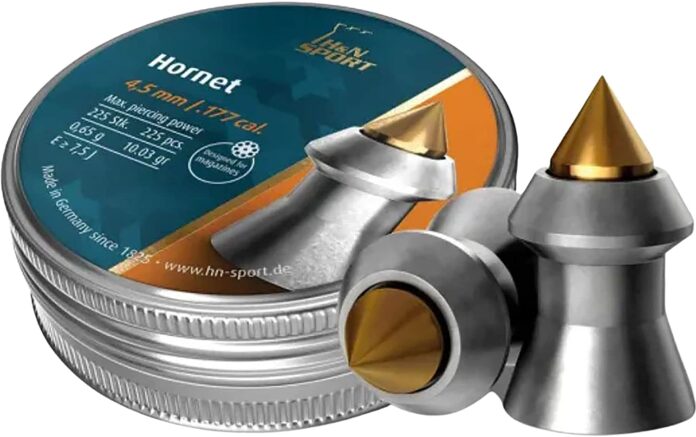Air rifle pellets have been traditionally made of lead or lead alloy. However, in recent years, manufacturers have experimented with different materials, such as bismuth and tin alloys, iron, zinc, and tin. Some pellets are even made of plastic. In this blog post, we will explore the different materials air rifle pellets can be made of and the advantages and disadvantages of each.

Why are airgun pellets made of lead?
The traditional material for airgun pellets is lead because it is soft and malleable. This means it can be deformed upon impact without shattering, which makes it ideal for use in air rifles. Lead is also relatively heavy for its size, which gives it good momentum when fired from an air rifle.
One of the disadvantages of lead pellets is that they can be harmful to the environment if not disposed of properly. Lead is a toxic metal that can leach into the soil and contaminate groundwater. It can also be harmful to animals if ingested. For these reasons, some countries have banned the use of lead pellets altogether.
Copper-coated airgun pellets
Copper-coated airgun pellets are made by coating a lead pellet with a thin layer of copper. The copper coating protects the lead core from corrosion and makes the pellet more aerodynamic. Copper-coated pellets are generally more accurate than traditional lead pellets because they are less affected by crosswinds.
The main disadvantage of copper-coated pellets is that they are more expensive than traditional lead pellets. Copper is a more expensive metal than lead, so copper-coated pellets typically cost 20-30% more than their lead counterparts.
Lead-free airgun pellets
Lead-free airgun pellets are made of alternative metals, such as alloys of bismuth and tin – or iron, zinc, and tin. These alternative metals are less dense than lead, so they are not as effective for long-range shooting. Lead-free pellets are also less aerodynamic than traditional lead pellets, so they are less accurate in crosswinds.
The advantage of lead-free pellets is that they are not harmful to the environment like traditional lead pellets can be. Lead is a toxic metal that can leach into the soil and contaminate groundwater. It can also be harmful to animals if ingested. For these reasons, some countries have banned the use of lead bullets altogether.
Conclusion
There are a few different materials that air rifle bullets can be made out of, each with their own advantages and disadvantages. The most common material has traditionally been lead or a lead alloy because it is soft and malleable ( meaning it can be deformed on impact without shattering) , relatively heavy ,and inexpensive . However ,lead bullets can be harmful to the environment if not disposed properly . As an environmentally friendly alternative , some people choose copper -coated bullets ,which despite being more aerodynamic and accurate ,are significantly more expensive . Finally , there are lead -free bullets made out of alternative metals such as bismuth ,tin ,iron ,zinc ,and plastic . While being eco -friendly ,these alternatives lack the range and accuracy of both traditional lead bullets and copper -coated bullets .












































